The Critical Role of Homemaking Services in Safe Medication Management for Seniors
As the aging population grows, ensuring the safety and adherence of elderly individuals to medication regimens remains a priority for healthcare systems. Homemaking services, with their focus on personalized and consistent support at home, are emerging as key contributors to improving medication safety and adherence among older adults. This article explores various strategies, technologies, and professional roles that underpin effective medication management in home settings, highlighting the profound impact on health outcomes and quality of life.
Understanding the Foundations of Medication Safety in Elderly Home Care
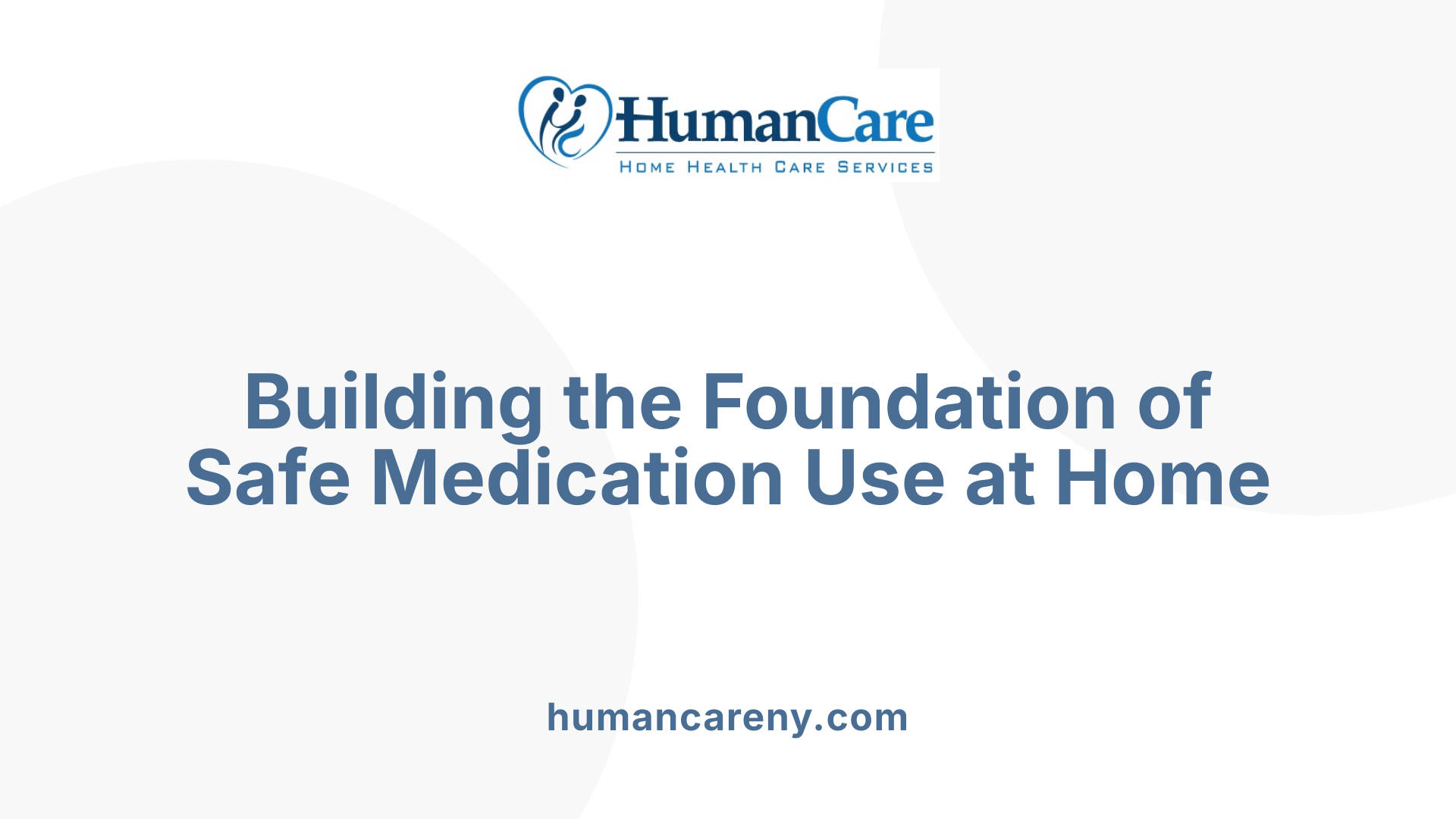
Why is medication management vital for maintaining independence and health outcomes in older adults?
Medication management is a fundamental aspect of caring for community-dwelling seniors. Proper oversight affects their ability to remain independent by preventing adverse drug events that could lead to hospitalization or decreased functionality. When medications are well-managed, older adults experience better symptom control, improved quality of life, and fewer hospital visits.
Ensuring safe medication use involves more than just taking prescriptions; it encompasses reviewing all medications, including over-the-counter (OTC), herbal, and vitamin supplements. Such comprehensive management helps avoid dangerous interactions and side effects, especially given that many older adults are on multiple medications.
Furthermore, as seniors age, they are more likely to encounter cognitive and physical limitations, which can compromise proper medication use. Addressing these challenges through tailored interventions and support systems is essential to uphold their health and independence.
What risk factors contribute to medication management problems in older adults?
Several factors increase the likelihood of medication management issues among seniors. Living alone is a significant risk, particularly for those with cognitive impairments. Limited social support means fewer reminders and oversight, raising the chance of missed doses or errors.
Physical impairments such as poor eyesight and diminished manual dexterity further complicate proper medication handling. Common age-related conditions like impaired vision can make reading labels difficult, while manual dexterity issues hinder opening bottles or handling blister packs.
Cognitive decline, including memory issues and confusion, also plays a role. Older adults over 75 are especially vulnerable, often taking multiple medications prescribed by different providers. Polypharmacy and coordination problems among prescribers can lead to medication discrepancies, increased side effects, or drug interactions.
In addition, financial barriers may prevent timely access to medications, leading to skipped doses or medication rationing. Collectively, these risk factors highlight the importance of targeted interventions to support safe medication use.
How does medication reconciliation improve safety in home care?
Medication reconciliation is a structured process that involves reviewing all prescribed medicines, OTC drugs, herbal products, and vitamins to ensure the correctness and appropriateness of each.
During reconciliation, healthcare providers compare current medications with previous records and prescriptions, screen for potential adverse interactions, and verify whether doses and schedules are suitable. This comprehensive review helps identify discrepancies, such as omitted medications, duplicates, or incorrect dosages.
The process often involves communication with prescribers to clarify or adjust medications, ensuring safety and consistency.
Studies show that medication reconciliation significantly reduces medication discrepancies, which in turn decreases adverse events and hospitalizations.
What are practical medication procurement strategies for older adults?
To support medication adherence, strategies should focus on making medications accessible and affordable. Assessing a patient’s ability to obtain prescriptions is the first step.
Pharmacies increasingly offer delivery services, which eliminate the need for frequent trips and reduce the risk of missing doses. Refill reminders via phone calls or digital alerts can help seniors maintain their medication schedules.
Financial barriers are common, especially for those on limited incomes. Assistance programs and medication subsidies can ease costs and improve access.
Combining these approaches creates a streamlined process that supports older adults in maintaining their medication routines safely and consistently.
How can tailored patient education improve medication use?
Effective education tailored to older adults involves clear, organized instructions delivered in an understandable format. Using visual aids like diagrams or large-print labels can overcome sensory limitations.
Reinforcement through repeated messages, in-person demonstrations, or follow-up calls enhances understanding and recall.
Education should also cover medication purpose, potential side effects, and the importance of adherence, empowering seniors to participate actively in their care.
When patients understand their medications better, adherence improves, which translates into better health outcomes and reduced risks of adverse events.
Mitigating physical impairments with container modifications
Physical impairments such as poor eyesight and limited manual dexterity can hinder effective medication management. Simple modifications can make a significant difference.
Large-print labels help those with visual deficits easily identify medications. Blister packs and easy-open containers facilitate access for individuals with limited hand strength.
Talk containers, which provide auditory feedback when medications are dispensed, can support those with sensory impairments.
By implementing these modifications, caregivers and healthcare providers can help older adults manage their medications more safely and independently.
The role of cognitive support devices in medication adherence
Cognitive impairments require additional support to ensure medications are taken correctly. Tools like pill organizers simplify complex regimens by pre-sorting doses.
Electronic reminders, including phone alerts, digital clocks, or medication apps, serve as prompts for medication times.
Voice-message alerts and automated phone calls can provide reassurance and guidance.
These devices help older adults maintain compliance, prevent missed doses, and foster a sense of control over their health.
How can addressing perceptions and beliefs influence medication adherence?
Intentional nonadherence often stems from beliefs about medications, fears of side effects, or skepticism about efficacy. Addressing these perceptions involves open communication and patient education.
Building a trusting relationship, involving patients in decision-making, and clearly explaining the benefits and risks of medications can enhance their confidence.
Educational interventions that dispel misconceptions and reinforce self-efficacy encourage consistent medication use and improve health outcomes.
Monitoring and ongoing support for safe medication use
Regular follow-up by nurses and healthcare teams is vital to monitor adherence, side effects, and medication effectiveness.
Given the narrow therapeutic windows of many drugs, vigilant oversight can prevent adverse events and hospitalizations.
This proactive approach includes revisiting medication regimens, assessing for side effects, and providing education to address emerging issues promptly.
Interventions that enhance medication adherence and patient outcomes
Multiple strategies have demonstrated success, including behavioral and educational programs, pharmacist-led counseling, and reminder systems. Simplifying regimens and reducing doses also improve adherence.
Studies show these interventions improve not just medication compliance but also broader health aspects like quality of life, control of chronic conditions such as asthma, and reduction in emergency visits.
Promising results from pharmacist-led interventions highlight the importance of ongoing support, especially post-hospital discharge, to sustain adherence.
How caregiver involvement influences medication adherence in dementia
Caregivers play a crucial role in managing medications for patients with dementia. Female caregivers and first-degree relatives like spouses or children tend to be more effective in ensuring adherence.
Overall, adherence rates are around 71% with caregiver support, underscoring the importance of caregiver involvement.
Caregivers' perception of medication management as easy or very easy, coupled with high satisfaction levels, contributes positively to safety.
Training caregivers about the importance of medications and disease management enhances safety and compliance. Their involvement significantly impacts outcomes.
Challenges faced by older adults living alone with cognitive impairments
Older adults living alone with cognitive deficits are at increased risk of medication errors, nonadherence, and adverse events. Limited oversight and social isolation exacerbate these risks.
Many are prescribed high-risk medications such as anticoagulants, sedatives, or opioids, which require careful management.
However, a report shows that only about 23-34% of these individuals receive help, making them vulnerable to complications.
Proactive interventions, including home medication delivery, telehealth monitoring, reminder devices, and community support services, have proven beneficial.
Healthcare providers should routinely assess living situations, incorporate medication support strategies, and consider deprescribing high-risk medications when appropriate.
The role of technology-assisted care
Innovative technologies such as telehealth, remote monitoring, and robotic assistance support medication management at home.
Devices like the Medication Adherence Management System (MAMS) combine robots and wearable devices to send reminders, confirm medication intake, and record history.
User-friendly interfaces, including voice commands and visual cues, make these tools accessible for seniors.
Caregivers can set personalized reminders remotely, increasing autonomy for elderly users. These systems help maintain safety, improve adherence, and reduce caregiver burden.
Nurses' involvement in promoting medication safety
Nurses serve as central figures in multidisciplinary teams, conducting medication reviews, providing education, monitoring adherence, and coordinating care.
Using digital health tools, nurses can enhance communication, track medication patterns, and identify issues early.
Research shows that nurse-led interventions improve overall safety, reduce medication discrepancies, and support better symptom control.
Implementing comprehensive assessments, such as the Safe Medication Assessment during home visits
Proactive evaluations like SMA during home visits enable healthcare providers to identify risk factors—such as polypharmacy, multiple prescribers, or cognitive issues—and implement targeted safety measures.
Structured protocols help simplify regimens, educate patients, and promote adherence.
Using tools like mobile care units, clinicians can deliver integrated care, bridging gaps between healthcare providers and community resources, ultimately enhancing treatment outcomes.
Supporting caregivers and personalizing tools for medication management
Caregivers often find managing complex regimens challenging but are essential for safe medication use.
Providing education, supportive tools, and personalized strategies—such as customized pillboxes or digital reminders—can improve medication safety.
Involving caregivers in training about medication importance and management techniques fosters better adherence and reduces risks.
Overall, strengthening caregiver capacity and utilizing innovative tools are vital strategies in safeguarding medication use among older adults at home.
The Impact of Homemaking Services on Medication Adherence and Safety
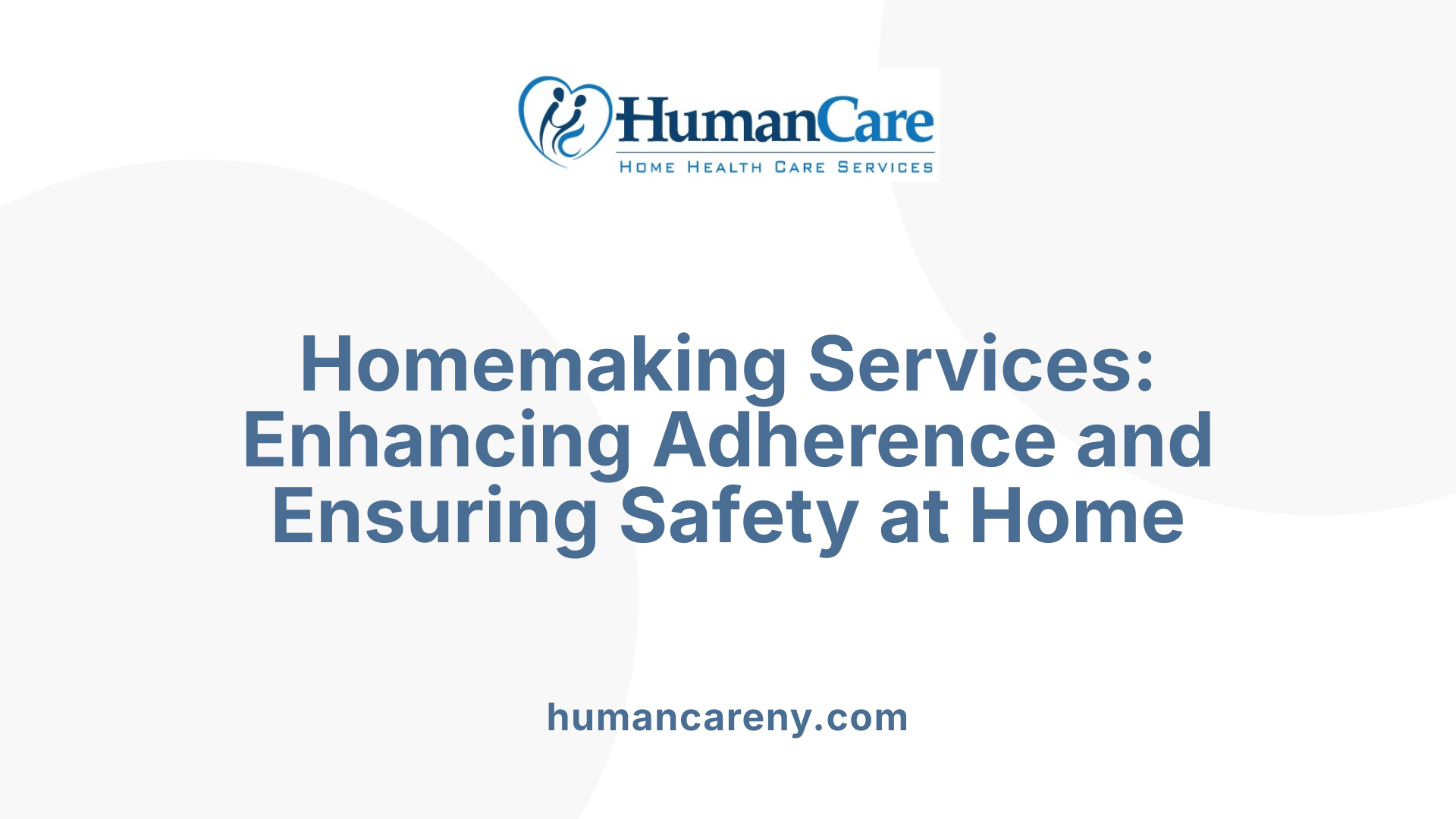
Supporting independence and reducing hospitalizations
Homemaking services play a vital role in helping older adults maintain their independence while managing their medications safely. By providing assistance with medication procurement—such as arranging delivery services, refill reminders, and addressing financial barriers—these services help prevent medication errors and adverse events. Proper support enables seniors to adhere to their treatment plans, thereby reducing unnecessary hospitalizations and improving their overall quality of life.
Significance of caregiver involvement and training
Caregivers, especially those who are first-degree relatives or female, significantly influence medication adherence for seniors, including those with dementia or cognitive impairments. Training caregivers about medication importance, potential side effects, and proper administration techniques can greatly enhance safety and adherence. Studies show that when caregivers are knowledgeable and involved, medication management becomes easier, and patients experience better health outcomes.
Home visit protocols and structured assessments
During home visits, health professionals utilize structured protocols like the Safe Medication Assessment (SMA) to identify and mitigate medication-related risks. These assessments evaluate polypharmacy, complex regimens, cognitive functional status, and the presence of risky medications such as anticoagulants or sedatives. These proactive evaluations help customize interventions like medication simplification and education, thereby improving safety and adherence.
Overall, integrating homemaking services with structured home assessments and caregiver training creates a comprehensive approach to medication safety. This strategy not only supports the independence of older adults but also reduces the risk of medication errors and hospitalizations, fostering safer aging-in-place.
Technologies and Innovation in Elderly Medication Management
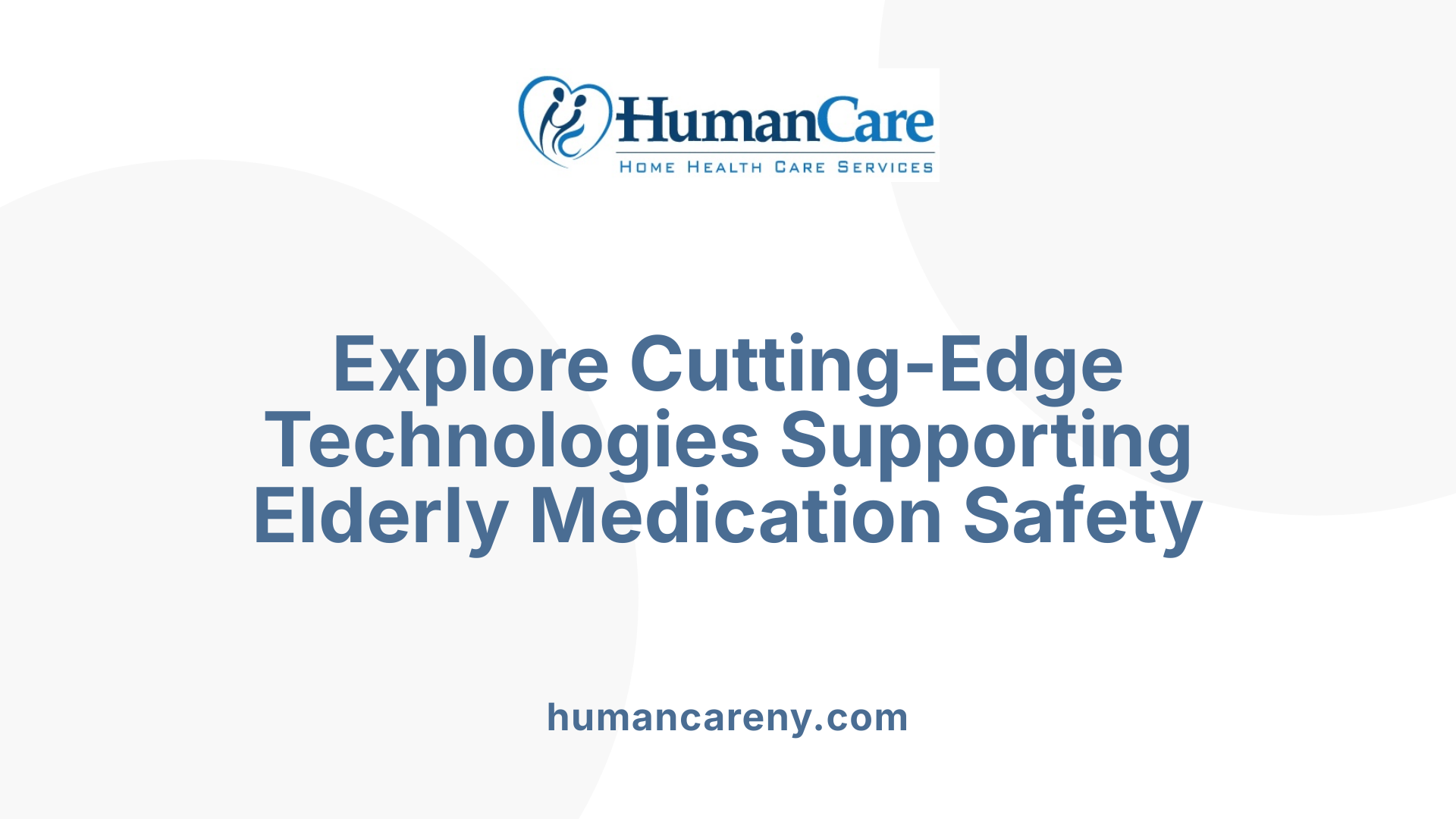
How do medication management systems like MAMS support elderly patients?
The Medication Adherence Management System (MAMS) is an innovative approach designed to help older adults manage their medications more effectively. It combines a companion robot with a wearable device to provide multimodal conversational interfaces, such as audio and visual cues, to remind patients to take their medicines, confirm their medication intake, and record medication history.
During evaluation with 35 users, participants rated MAMS highly in terms of convenience (8.17 out of 10), usefulness (8.49 out of 10), and adoptability (8.23 out of 10). This system serves as a vital link between elderly users and their caregivers, enabling greater autonomy while ensuring medication safety. Caregivers can set reminders through a mobile app or via voice commands to the robot, making medication adherence more manageable and less burdensome.
How are digital health tools like telemonitoring and reminder apps improving medication adherence?
Technologies such as telehealth monitoring platforms, reminder applications, and electronic alerts have shown significant promise in supporting older adults, especially those with cognitive impairments or sensory limitations. These tools help track medication schedules, send automatic reminders, and alert caregivers or healthcare providers if medications are missed or if there are potential adverse interactions.
Nurses and healthcare workers use these digital tools during home visits or remote consultations to monitor adherence, identify issues early, and provide tailored educational support. Evidence suggests that such interventions can lead to better health outcomes, including reduced hospitalizations, improved symptom control, and enhanced quality of life.
How do robotics and wearable devices ensure medication adherence?
Robots like the MAMS and wearable devices are making their way into home care settings to facilitate medication management. These systems support older adults by delivering reminders, confirming medication intake, and maintaining accurate medication histories.
For example, wearable devices can alert users through vibrations or sounds when it's time to take medication, and some systems include voice-message alerts or visual prompts. When combined with robotic companions, these tools create a user-friendly interface that encourages adherence and provides reassurance.
In addition, caregivers can remotely monitor adherence via mobile apps, view medication histories, and adjust reminder settings. Such innovations not only enhance medication safety but also promote independence for older adults living with chronic conditions.
| Technology Type | Main Functionality | Benefits | Limitations |
|---|---|---|---|
| MAMS System | Robot & wearable for adherence | High user satisfaction, autonomy, safety | Cost, tech literacy needed |
| Reminder Apps | Automatic alerts | Simple, scalable, improves adherence | Device dependency, forgetfulness |
| Telemonitoring | Remote health status tracking | Early problem detection, reduced hospital visits | Privacy concerns, need for connectivity |
| Robots & Wearables | Multimodal medication cues | Supports cognitive and sensory impairments | Cost, user comfort |
Advancements in these areas demonstrate the potential of integrating innovative technologies into elderly care, ultimately making medication management safer, easier, and more effective for independent living.
The Role of Healthcare Professionals and Caregivers
Nurses and pharmacists in medication review and education
Nurses and pharmacists play a critical role in ensuring medication safety for older adults living at home. They conduct regular medication reviews using structured protocols like the Safe Medication Assessment (SMA) during home visits. This process helps identify potential risks such as polypharmacy, drug interactions, and improper storage. Pharmacists also provide essential education, simplifying complex medication regimens, and offering advice on side effects and adherence strategies. Nurse-led interventions, particularly those involving digital health tools such as telehealth and wearable devices, have been shown to significantly reduce medication discrepancies and improve patient safety.
Caregiver roles, training, and influence
Caregivers are vital in supporting medication adherence, especially in patients with cognitive impairments like dementia. They assist with activities such as obtaining medications, organizing pill boxes, and administering drugs, often using personalized tools to fit the patient's needs. The involvement of caregivers—particularly females and first-degree relatives like spouses or children—has been associated with higher adherence rates, approximately 71% among dementia patients. Training caregivers about the importance of medication and how to manage it safely can further enhance these outcomes. Caregivers' ease of handling medication (rated over 90% as easy or very easy) indicates their significant impact on medication safety and the potential to prevent adverse events.
Multidisciplinary approaches for optimal safety
A comprehensive approach involving multiple healthcare professionals—doctors, pharmacists, nurses, social workers, and community agencies—is essential for enhancing medication management. This team collaborates to deprescribe risky high-risk medications, monitor adherence, and address social factors such as living alone or isolation. Technologies like telemonitoring, medication robots (e.g., the Medication Adherence Management System, MAMS), and mobile care units support these efforts.
Such interdisciplinary strategies focus on personalized care plans, proactive assessments, and caregiver support, which collectively minimize medication errors and improve health outcomes. Regular monitoring and education reinforce safe medication practices, particularly for those with cognitive or sensory impairments, ensuring older adults maintain independence and avoid unnecessary hospitalizations.
Structured Assessments and Home Visits for Enhanced Safety
How can Safe Medication Assessment (SMA) during visits improve medication safety?
Implementing Safe Medication Assessment (SMA) during home visits provides a proactive approach to ensuring medication safety among older adults living independently. This structured assessment involves systematic evaluations to identify potential risks such as polypharmacy, multiple prescribers, cognitive issues, and risky medication behaviors. By carefully reviewing medication regimens and storage practices, healthcare providers can detect discrepancies, adverse interactions, and adherence issues early.
SMA includes checking medication counts, verifying instructions, and observing storage conditions. It also involves engaging the patient and caregivers in educational activities to promote understanding. When integrated into routine visits, SMA helps tailor interventions like medication simplification or deprescribing, thereby reducing adverse events, hospitalizations, and improving overall safety.
What are important risk factors and strategies for simplifying medication regimens?
Recognizing risk factors such as polypharmacy, cognitive decline, and multiple prescribers is essential in managing medication safety. Older adults who see several healthcare providers are at higher risk of medication discrepancies and interactions.
Strategies to address these risks include:
- Deprescribing high-risk medications, especially those with anticholinergic or sedative properties.
- Streamlining medication regimens to reduce pill burden and complexity.
- Using technological tools, like electronic medication lists, to keep track of prescriptions.
Simplifying regimens enhances adherence, minimizes errors, and supports independence.
How do protocols and checklists facilitate safer medication practices?
Using structured protocols and checklists during home visits standardizes medication assessments and ensures comprehensive coverage of safety points. These tools guide healthcare providers through reviewing medication appropriateness, identifying interactions, and verifying adherence.
Checklists help avoid omissions and ensure consistent evaluation of critical factors, such as medication storage, side effect monitoring, and caregiver capacity. Protocols like the SMA provide a clear framework for intervention and documentation, supporting better communication among care team members.
This systematic approach improves medication management accuracy, enhances patient safety, and streamlines follow-up actions. It also fosters caregiver involvement and patient education, ultimately leading to safer medication use at home.
| Approach | Focus Area | Benefits |
|---|---|---|
| Safe Medication Assessment (SMA) | Comprehensive review during home visits | Early detection of risks, tailored interventions |
| Risk Factor Identification | Polypharmacy, cognitive issues, multiple prescribers | Reduces errors, enhances safety |
| Medication Regimen Simplification | Deprescribing, reducing pill burden | Improves adherence, minimizes adverse events |
| Protocols and Checklists | Standardized assessment tools | Consistency, thoroughness, better communication |
Applying these structured assessments and protocols helps create a safer medication environment, promoting independence and reducing hospitalizations among vulnerable older adults.
Addressing Challenges of Polypharmacy and Cognitive Impairment
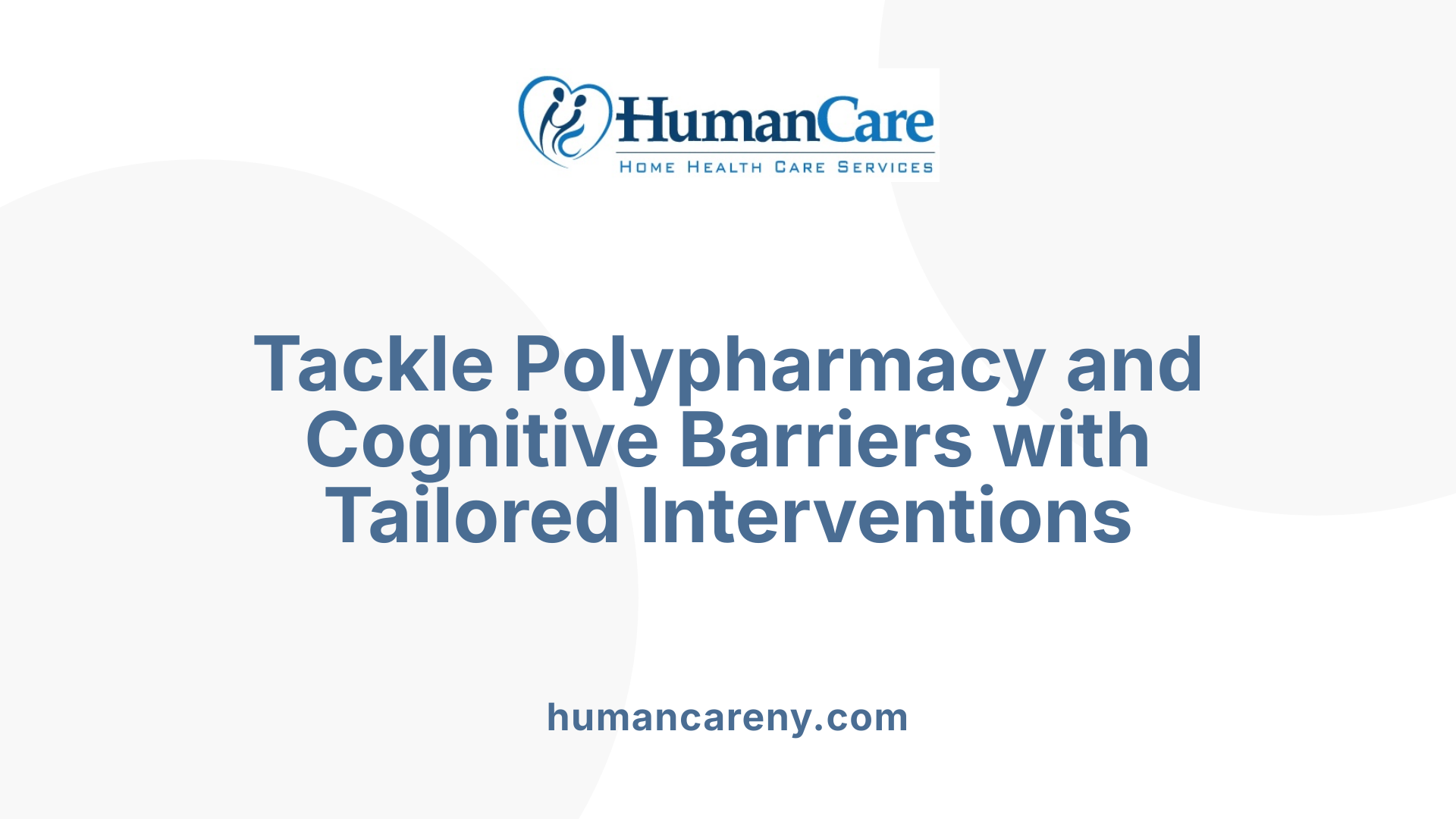
What are the risks associated with polypharmacy?
Polypharmacy, the use of multiple medications by older adults, especially those with chronic conditions, presents significant risks. It increases the likelihood of drug interactions, adverse effects, and medication errors. Many seniors are prescribed high-risk drugs such as anticoagulants, sedatives, and drugs with anticholinergic properties, which can lead to confusion, falls, or hospitalizations.
Often, older adults living alone with cognitive impairment are particularly vulnerable due to limited oversight. These individuals are less likely to receive help managing their medications, heightening the risk of nonadherence and adverse events. Polypharmacy can complicate medication regimens, making it harder for seniors to follow prescribed plans accurately.
How does cognitive decline impact medication management?
Cognitive impairment affects a person’s ability to remember, understand, and correctly administer medications. It hampers their capacity to process complex instructions or recognize side effects and interactions, increasing the chance of medication errors. Elders with cognitive issues living alone face added dangers, as they are less likely to have support for managing their medications.
Research indicates that caregivers, especially those who are first-degree relatives and female, significantly influence medication adherence in dementia patients. Proper caregiver training about medication importance and disease management can greatly improve safety and adherence.
What strategies can improve medication management for older adults?
To address these challenges, healthcare providers should focus on simplifying medication regimens through deprescribing unnecessary drugs and using combination therapies when appropriate. Regular medication reviews, such as the Safe Medication Assessment (SMA), during home visits help identify high-risk medications, interactions, and nonadherence risks.
Innovative tools and interventions are essential. These include medication organizers, electronic reminders, voice-message alerts, and caregiver-supported digital health platforms like the Medication Adherence Management System (MAMS). This system combines a robot with wearable devices, providing multimodal reminders, medication confirmation, and history tracking, supporting autonomous medication routines.
Furthermore, community-based strategies such as home medication delivery, telehealth monitoring, and caregiver education are vital. Training caregivers to understand the importance of medication adherence and safety enhances compliance and reduces hospitalizations.
| Strategy | Implementation | Benefits |
|---|---|---|
| Medication Reconciliation | Reviewing all medication types regularly | Reduces discrepancies, adverse interactions |
| Deprescribing | Discontinuing non-essential meds | Minimizes risks, simplifies regimens |
| Use of Technology | Digital reminders, robot-assisted systems | Increases adherence, independence |
| Caregiver Support | Training and involvement | Improves safety, adherence |
By combining these strategies with ongoing nurse-led monitoring, healthcare teams can significantly improve medication safety, adherence, and ultimately, the quality of life for older adults living at home.
Supporting Home Procurement and Financial Barriers
Assistance with medication access
Many older adults living independently face challenges in obtaining their medications. Limited mobility, transportation issues, and cognitive impairments can make pharmacy visits difficult. To address this, healthcare providers can assess an individual's ability to access prescriptions and consider alternative solutions that facilitate medication procurement.
Use of pharmacy delivery and financial aid
Pharmacy delivery services have become increasingly popular, especially for older adults who have difficulty traveling. These services ensure timely access to prescription medications, reducing delays and missed doses.
Refill reminders—via phone calls, text messages, or mobile apps—help patients adhere to their medication schedules and prevent lapses.
Financial barriers also pose a significant obstacle. Assistance programs, such as government subsidies, pharmaceutical assistance programs, and local community resources, can help older adults afford their medications. Pharmacists and social workers can guide patients toward programs like Medicaid, Medicare Part D, or drug discount plans.
Reimbursement and subsidy programs
Reimbursement initiatives play a vital role in reducing out-of-pocket costs, encouraging adherence. Subsidies for medication costs or copay assistance programs can lessen financial strain, especially for those on fixed incomes.
Clinicians should routinely evaluate if patients qualify for such programs and assist in the application process. This proactive approach helps minimize missed doses, reduces the risk of adverse health outcomes, and supports older adults in managing their health independently.
| Strategy | Description | Benefits |
|---|---|---|
| Pharmacy home delivery | Medications delivered directly to the patient's home | Enhances access, reduces transportation barriers |
| Refill reminder systems | Automated alerts for medication refill dates | Prevents missed doses |
| Financial assistance programs | Subsidies, discounts, and subsidies for medication costs | Alleviates financial burden |
| Reimbursement initiatives | Insurance reimbursements, copay assistance | Reduces out-of-pocket expenditure |
Implementing these strategies ensures that older adults can maintain their medication routines effectively, supporting their independence and health when living at home.
Training Caregivers for Effective Medication Management
What educational programs and resources are available for caregivers?
Caregivers play a vital role in ensuring the safe and effective medication management for older adults, especially those with cognitive impairments or living alone. Various educational programs, both online and in-person, provide essential information on medication handling, recognizing adverse effects, and proper administration techniques.
Community health centers, hospitals, and pharmacy organizations often offer tailored training sessions designed specifically for family members and informal caregivers. These programs typically include resources such as pamphlets, videos, and interactive workshops that focus on medication schedules, understanding drug interactions, and how to use assistive devices effectively.
Online platforms also offer comprehensive modules and courses that caregivers can access at their convenience. These resources simplify complex topics, making it easier to understand medication routines, potential side effects, and when to seek medical help.
How does disease-specific training enhance caregiver effectiveness?
Training that targets specific health conditions can significantly improve medication adherence and safety. For instance, caregivers managing older adults with dementia require education on behavioral management alongside medication routines to prevent confusion or accidental overdose.
Similarly, caregivers for patients with cardiovascular issues or diabetes need to understand particular medication properties, potential interactions, and the importance of adherence to prevent serious health episodes.
Disease-specific training often involves collaboration with healthcare professionals, providing detailed instruction on managing complex regimens, recognizing warning signs of deterioration, and adjusting medication plans under supervision.
How can caregivers build confidence in medication management?
Confidence is crucial for caregivers to perform medication tasks without errors and with assurance. Building this confidence involves ongoing education, support, and practical experience.
Healthcare providers should encourage caregivers to ask questions, participate in medication reviews, and engage in hands-on demonstrations of device use. Support groups and peer networks also offer shared experiences, tips, and reassurance, reducing anxiety about medication management.
Regular follow-ups and refresher courses help caregivers stay updated on new medications or changes in treatment plans. Recognizing their vital contribution and providing positive feedback boosts their self-efficacy, thereby improving adherence and safety for older adults.
| Topic Area | Details | Additional Resources |
|---|---|---|
| Educational programs | Workshops, pamphlets, online courses | Local clinics, pharmacy websites |
| Disease-specific training | Management of dementia, diabetes, cardiovascular diseases | Healthcare professional-led sessions |
| Building confidence | Ongoing support, hands-on practice, peer groups | Caregiver support organizations, online forums |
Supporting caregivers through these educational strategies enhances medication safety, promotes independence, and improves overall health outcomes for older adults in community settings.
Integrating Technology with Personal Care
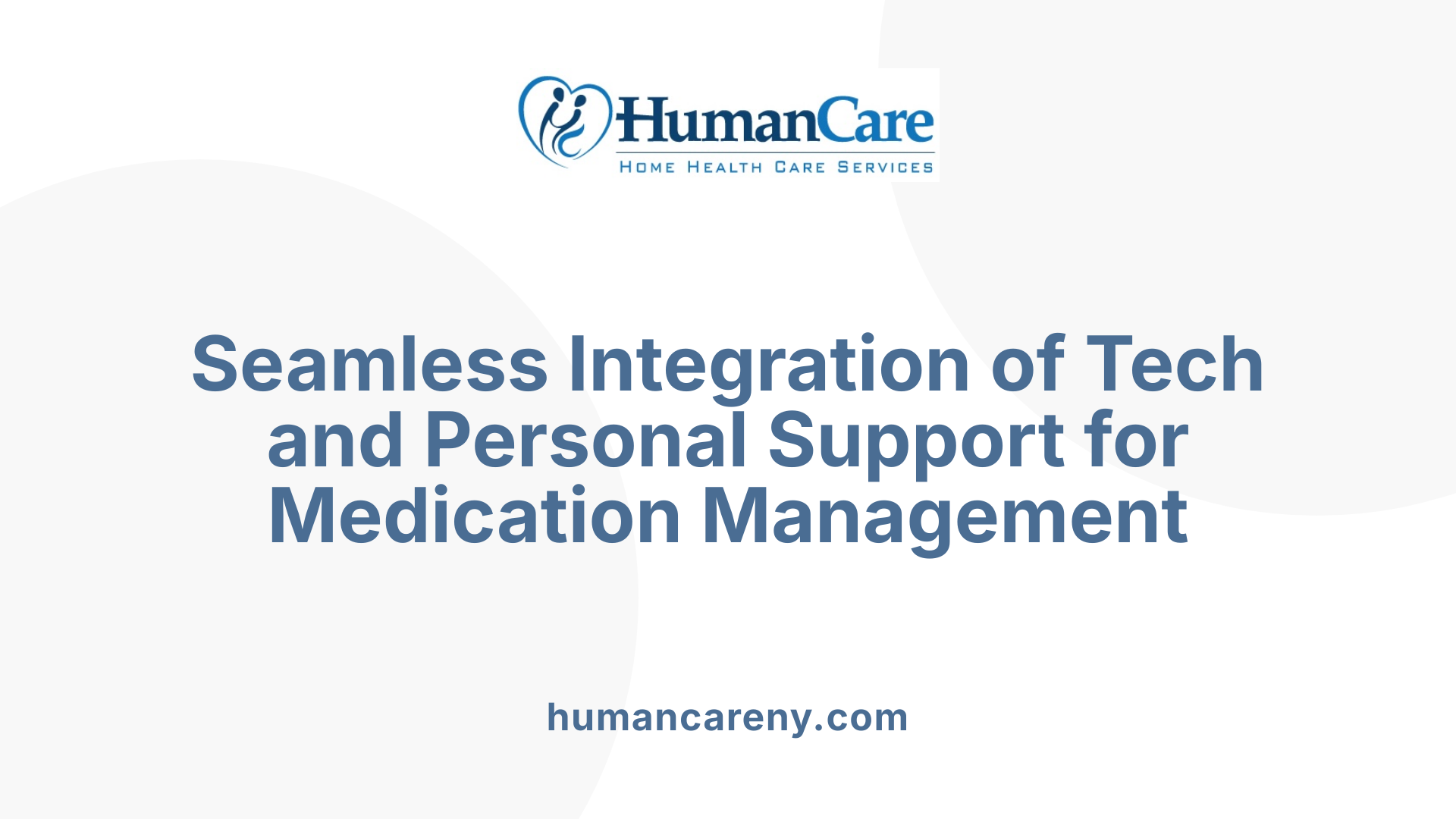
How can digital tools complement the role of caregivers in medication management?
Digital tools, such as mobile apps, smart pill dispensers, and wearable devices, greatly enhance the ability of caregivers to support medication adherence. These tools can provide reminders, track medication schedules, and record adherence data, reducing the burden on caregivers and ensuring consistent medication use.
For example, caregiver-friendly apps allow real-time updates and communication, enabling caregivers to oversee medication routines even when they are not physically present. They can also customize alerts based on individual needs, helping to address challenges faced by older adults, especially those with cognitive or sensory impairments.
How does remote monitoring improve medication adherence?
Remote monitoring technologies such as telehealth systems, sensor-enabled pillboxes, and automated alerts enable healthcare providers and families to supervise medication routines without frequent home visits. These systems can alert caregivers or clinicians about missed doses or potential errors, allowing for prompt intervention.
Studies show that remote adherence monitoring can significantly reduce medication errors and hospitalizations, particularly for older adults managing complex regimens. This approach ensures ongoing oversight while respecting the independence of seniors in their own homes.
In what ways can communication between caregivers and healthcare providers be improved?
Effective communication is crucial for safe medication management. Digital platforms facilitate seamless information exchange through shared electronic health records, messaging systems, and video consultations. Caregivers can report issues, ask questions, and receive tailored advice from healthcare professionals easily.
Such connectivity allows providers to intervene proactively, adjust medications when necessary, and educate caregivers about proper medication handling. Overall, integrating technology bridges gaps, supports caregiver efforts, and enhances patient safety in community settings.
| Aspect | Description | Benefits |
|---|---|---|
| Digital Tools | Apps, smart dispensers, wearable reminders | Simplifies routines, personalized alerts |
| Remote Monitoring | Telehealth, sensor devices, alerts | Ensures adherence, early error detection |
| Caregiver-Provider Communication | Online records, messaging, video calls | Facilitates quick updates, professional guidance |
Through these technological innovations, medication management for older adults becomes safer, more efficient, and better tailored to individual needs, supporting independence and reducing health risks.
Future Directions and Research Needs
As the landscape of medication management for older adults continues to evolve, several emerging interventions show promise in enhancing safety and adherence. Technological innovations such as robot-assisted systems like the Medication Adherence Management System (MAMS) have demonstrated high usability and potential for supporting elderly patients in managing their medications at home. Combining multimodal interfaces—audio and visual—these devices empower both patients and caregivers by offering reminders, verification, and medication tracking, thereby reducing errors.
Despite these advancements, significant evidence gaps remain. More research is needed to evaluate the long-term effectiveness and cost-efficiency of such technology-based solutions, especially in diverse populations and settings. Additionally, the implementation strategies tailored to individuals with cognitive or sensory impairments require further investigation to optimize usability.
Ethical considerations also come into focus when deploying advanced technologies. Respecting patient autonomy, ensuring data privacy, and avoiding over-reliance on devices that might diminish personal contact are critical to maintaining trust and quality of care.
Policy and community-based initiatives are essential to support these innovations. Developing guidelines for safe and equitable use of technology, funding community intervention programs, and encouraging integration with existing healthcare services can enhance access and adherence. Training healthcare providers and caregivers about new tools and fostering collaborations among stakeholders will further strengthen medication safety efforts.
In summary, strengthening research, addressing ethical concerns, and promoting policy support are vital steps toward improving medication management among older adults, thereby reducing adverse events and enhancing quality of life.
Conclusion: The Key to Safer, More Independent Aging at Home
Maintaining medication safety is essential for older adults living independently. Strategies such as thorough medication reconciliation and personalized patient education help prevent adverse events and hospitalizations. Utilizing tools like medication reminder devices, container modifications, and digital health systems support adherence despite sensory or cognitive impairments.
Healthcare professionals, including nurses and pharmacists, play a vital role by conducting home medication assessments, providing ongoing monitoring, and involving caregivers in medication management. Community resources, such as telehealth and home delivery services, further enhance safety and independence.
Fostering a culture of safety requires collaborative efforts among caregivers, social services, and health providers. Training caregivers, optimizing medication regimens through regular review, and leveraging innovative technologies like smart robots and wearable devices contribute to a safer home environment.
Together, these approaches build confidence and independence for older adults, ensuring they can manage medications effectively while reducing risks and promoting quality of life.
Harnessing Support for Safer Aging
By leveraging the coordinated efforts of homemaking services, healthcare professionals, caregivers, and innovative technologies, we can significantly improve medication adherence and safety among older adults. These comprehensive approaches not only reduce the risk of adverse events but also promote independence, enhance quality of life, and support aging in place with confidence.
References
- Medication Management of the Community-Dwelling Older Adult
- Improving Medication Adherence and Health Outcomes in Older ...
- Role of caregivers on medication adherence management in ...
- Home alone and high risk: Supporting medication management in ...
- Nurse-Led Medication Management for Older People in Home Care
- Medication adherence management for in-home geriatric care with a ...
- Ensuring Safe Medication Assessment for Older Adults: A Pilot Study
- Medication management activities performed by informal caregivers ...



